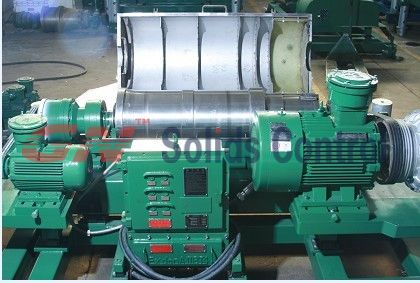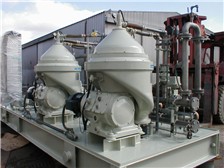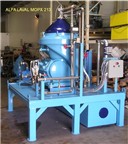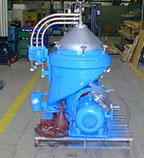by ANDREW BURGER
It stands to reason that governments around the world are looking to expand their use of nuclear energy in coming years given the potentially catastrophic effects of
Uranium ore prices have begun rising again this past month, breaching US$90/lb., after having fallen back and settled around the US$80/lb. level after skyrocketing up to US$138/lb. in June this year from lows around US$7/lb. that lasted decades and prompted mine closings and the curtailment of exploration programs. Lately it’s been sharp run-ups and volatility in oil and gold prices that have attracted the focus of energy and mineral resources investors and the media.
Energy and uranium market fundamentals haven’t changed, however. The base case reference scenario for the US Energy Information Association’s International Energy Outlook 2007 is based on worldwide electricity demand increasing 2.4% per year, from 16,424 billion kilowatt-hours in 2004 to 303,364 in 2030, most of it non-OECD nations. Coupled with ever greater resources being devoted to mitigating climate change and significantly cutting back global greenhouse emissions, junior uranium explorers such as Vancouver’s Atomic Minerals Ltd. (TSX.V:ATL) are raising capital and gearing up to follow through on ambitious acquisition and development plans.
From Southwestern Colorado… Listing on the Toronto Venture Exchange in June, Atomic Minerals owns 932 claims covering 19,250 acres and has signed a Letter of Intent to purchase an additional 1,585 acres on what it considers to be a prime, untapped area for uranium ore prospects: the Dolores Anticline, a large, asymmetrical northwest-trending fold in southwestern Colorado’s Dolores and San Miguel counties.
Located within the Paradox Basin and Uravan Mineral Belt some 30 miles from southeastern Utah’s Lisbon Valley, this area in the Four Corners region was the scene of a uranium boom in the 1950’s after an initial discovery by “Uranium King” Charles A. Steen led to the development of a number of mines. In total, these have produced more than 80% of the uranium mined in Utah—in excess of 103 million pounds.
Atomic management considers Dolores to be the last saltwater anticline in the southwestern US with excellent uranium ore prospects. A recently completed NI 43-101 report confirmed that the claim area, which is approximately 30 miles away from Denison Corp.’s White Mesa Mill, has the potential to host a uranium deposit and Atomic has put together exploration plans for a US$2 million Phase Two drilling program to further explore and define the potential resource.
The Salt Wash Member of the Morrison Formation of Late Jurassic Age and the Moss Back Member of the Late Triassic Chinle Formation in and near the Uravan Mineral Belt in San Miguel, Montrose and Dolores Counties, Colorado have produced economically significant amounts of uranium ore. Drilling programs on the Dolores Anticline conducted by Hunt Oil and Newmont in the 1970s indicated that the uranium ore-bearing Moss Back Member of the Chinle Formation is present in the area.
Atomic on November 15 announced that it had begun drilling on a first transect of a planned 30,000 feet for the Summit Point and Box Canyon Exploration Projects in San Miguel County.
“Our initial drill hole at Summit Point will be looking for the mineralized zone of the Moss Back member of the Chinle Formation. Upon completion of this hole, we will be working along the flank of the Anticline with the next eight holes. Our rotary drill rig is running 24 hours a day, and this first hole of up to 2100 feet should be completed by Friday morning.”
Additionally, the Dolores Anticline was drilled by both Hunt Oil and Newmont in the 1970s. Drill logs from this wide spaced drilling indicate that the favorable Moss Back Member of the Chinle Formation is present in the area.
Atomic also owns 119 claims spanning 2,460 acres known as the Troublesome Creek property where a potential resource estimated as high as 6-7 million tons U308 grading between 0.08 to 1.14% holds out the possibility of in situ leach processing of uranium channels. Similar potential, as well as mining an unconformity type uranium deposit, exists at the Little Wolford property, where Atomic has filed for a state lease covering 640 acres. Rounding out Atomic’s Colorado holdings, the Beaver Creek property consists of 27 claims spanning 540 acres adjacent to a Newmont exploration project that has reported grades of 0.35-1.33% U308.
…to Southwestern Tanzania Atomic has also cast its net farther afield. It has signed a Letter of Intent with Tanzania’s Geo Can Resources for an option to acquire up to a 100% interest in a land package totaling approximately 1.3 million acres located in the United Republic of Tanzania.
The LOI for the option covers ten licenses and seven parcels of land with known occurrences of uranium in southwestern Tanzania, as well as three “key” parcels in the Ruhuhu Basin, part of the Malawi Extension where 60 kilometers away in Malawi Perth-based Paladin Resources Ltd. (TSX:PDN) is developing its Kayelekera uranium ore project.
Atomic’s agreement with Geo Can Resources on the shores of Lake Nyasa, also known as Lake Malawi, extends into southern Africa’s Karoo Basin system, a deposition region known to contain significant sandstone-hosted roll front uranium deposits of the same type found on the Colorado Plateau and the world-class Mi Vida Mine near Moab, Utah that are mined by in situ leaching methods.
Current estimates for Paladin’s Kayelekera project in neighboring northern Malawi holds measured and indicated resources of 14,000 tonnes U308 and an additional 2,000 tonnes inferred. Paladin completed a Bankable Feasibility Study for Kayelekra early this year, has met environmental regulations and is investing US$185 million to develop a mine site. Production is expected to commence late in 2008 and expand up to 1270 tonnes per year.
Australia’s Western Metals (ASX:WMT) on Oct. 22 reported that ongoing drilling and trenching at its Mtonya project continues to discover high-grade uranium mineralisation over a 7 kilometre trend including 1.2 meters at 7,723 ppm U308 and 0.8 m at 1,035 ppm at the Grandfather prospect. Western Metals plans to spend A$3.5 million on exploration in Tanzania over the next 15 months.
Uranium Mining, Business & the Environment Tanzania has set a goal for the mining sector to grow from a current 2% to 10% of GDP by 2025, deputy minister of mining and minerals William Gereja has been reported as saying. Uranium ore may join gold and diamonds as one of the country’s top mineral exports if additional exploration and resource definition work pans out as well as is anticipated. Tanzania is Africa’s third-largest gold producer, ranking behind South Africa and Ghana.
"This is good news," Gereja told a reporter from Voice of America’s Kenya bureau at the end of July. "Uranium is used for many industrial uses in the world and we expect that uranium in our country, Tanzania, would make us benefit a lot. We expect to raise revenues from this uranium mineral."
Security and environmental health and safety are always issues when it comes to uranium.
“We have passed all environmental and Arc studies needed as per the BLM in Colorado. In Tanzania, we are in the midst of doing the equivalent for the same requirements. The main thing to look at in Tanzania is not only the land but also the many jobs this will create,” Atomic Minerals’ Chris Brown told Resourcex Investor.
Tanzania, as well as other African countries, has been a favored transit point for smugglers. In 2005 Tanzanian customs officials discovered a large shipment of uranium from Kinshasha bound for the Iranian port of Bandar Abbas. Four Tanzanians, including a government economist, were arrested in Tanzania in 2002 after 110 kilograms of uranium in plastic containers were found and seized.
The Tanzanian government is working to clamp down on both smuggling and corruption. The deputy minister of mining and minerals has said that laws and safeguards will be enacted if and when uranium is mined and produced to prevent it from falling into the wrong hands.
In terms of foreign miners doing business in Tanzania, “The Mining Act of 1998 legislated a clear exploration and mining regime that guarantees against nationalization and expropriation with a fair, predictable tax regime. A Chubb Group World Risk Survey in 2006 had Tanzania in the 10 lowest investment risk countries,” according to Western Metals.
This article is intended for information purposes only, and is not a recommendation to buy or sell the equities of any company mentioned herein. It is based on sources believed to be reliable, but no warranty as to accuracy is expressed or implied. The opinions expressed in the article are those of the author except where statements are attributed to individuals other than the author, in which case the opinions are those of the individual to whom they are attributed.
Related Articles - atomic, business, mining, finance, investing, drilling, exploration, uranium, tsx, atl, tanzania, mineral,












